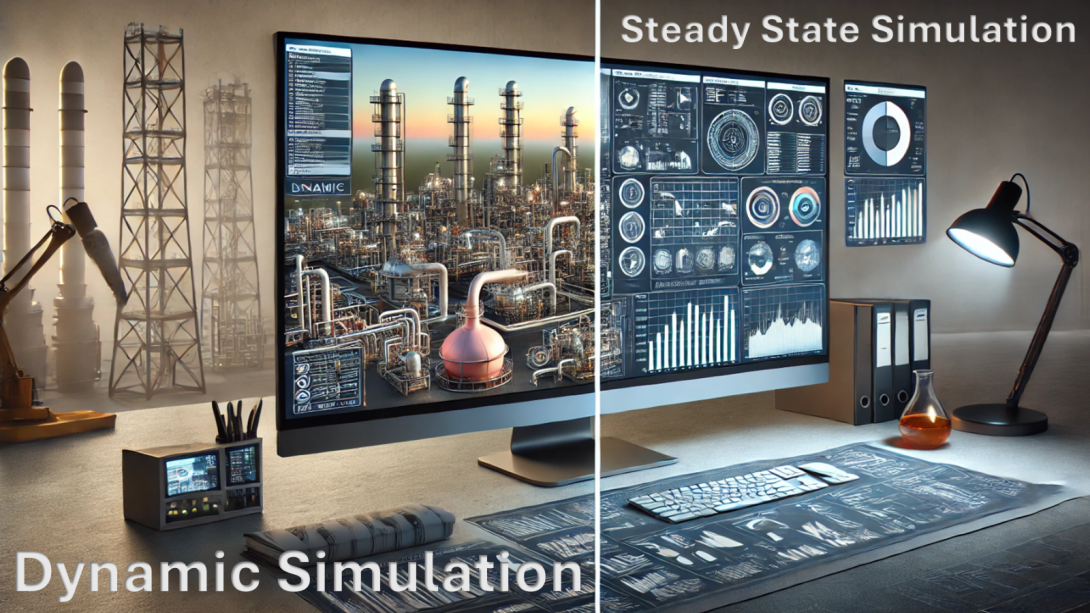Ask Russ Rhinehart

We ask Russ:
What are some of the benefits of dynamic simulation over steady state simulation?
Russ' Response:
Traditionally, process design uses steady state (SS) simulation, and it serves its purpose well. Most analysis of processes and textbook instruction on how processes work use SS relations. These could be termed static models, which represent process interactions, gains, and sensitivities when the process has lined out to steady operations.
The problem is that SS models do not indicate how the process moves from an initial to a final SS. The path it takes to move from one SS to another is termed a transient, which is described by dynamic models. Dynamic models might be called time dependent, transient, or temporal models. Understanding the transient can be essential.
For instance:
- In a long pipeline, a rapid change in a flow control valve position or in switching a pump on and off can create a large temporary pressure excursion as the fluid accelerates or decelerates causing a water hammer or temporary cavitation effect.
- Changing flow rates can substantially change the transport delay in a delivery system, which may cause operators or controllers to overreact. At SS it does not matter how long the line is, but a long line can cause a confounding delay that would not be revealed by SS simulation.
- Changing tank levels can substantially change the lag-time in mixing. This could greatly amplify over and undershoot pH response when there is a delivery line after the reagent valve that continues to drip after shutoff, or needs to be filled after the valve response. SS analysis will not reveal this.
- There are continual perturbations in composition, temperatures, and flow rates of inflows to a distillation column. These may push the column into weeping or flooding situations, even though SS models using nominal conditions indicate that operation is permissible.
- A short duration of an input perturbation to a process might washout from in-process dilution and have no impact, but a longer or larger might cause a specification or operational violation.
In designing a control system, one might find a clever solution using SS responses, which may not work in practice due to the process transient responses. As much pride we might have in a technical solution, it is not the solution or the affirmation of our ability that is important. Use dynamic simulation to quantify the bottom-line benefit to the organization.
There are many benefits for using dynamic simulations to understand and test control-related functions and applications, including:
- Training operators and engineers to understand and manage the process.
- Teaching students about the fundamentals.
- Evaluating and demonstrating the economic benefit of the next level of advanced regulatory control or of model predictive control.
- Safely testing automation algorithms such as for steady-state detection, fault detection, auto tuning, getting controller models, tuning algorithms, etc.
- Safely testing process and control system design options for insensitivity to disturbances.
- Comparing control strategies for economic benefit (quality giveaway, constraint violations, waste generation, calibration error robustness, capital cost of devices, maintenance).
- Generating data to test Big Data algorithms for developing models.
I encourage you to use phenomenological models in dynamic simulators that legitimately represent your process, as opposed to FOPDT, or trivial mechanistic, or empirical black-box models.
In subsequent ProseraPods, I’ll introduce how to create your own first-principles models, how to simulate environmental vagaries, how to calibrate and validate models, and how to use the models to evaluate the various economic indicators of transient events. I hope to visit with you later. Meanwhile, visit my web site https://www.r3eda.com/ to access information about modeling, control, optimization, and statistical analysis.
